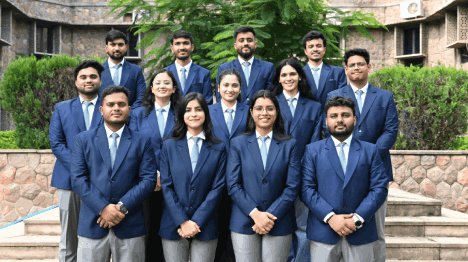- About Us
- Academics
Schools
Programs
General Information
- Faculty
The faculty members and researchers working at IIHMR University come from varied backgrounds including, but not limited to medicine, public health, management, economics, statistics, demography, human geography, social and behavioral sciences, rural development and pharmaceuticals.
- Admissions
- Research
.Publications & Journal
- Executive Education
Executive Programmes
- Online Certification Courses
ONLINE CERTIFICATION Courses
- Training
- Placements
- Fee Payment
- NAAC
- IQAC
- NIRF
- Webinars
- About Us
- About IIHMR University
- Board of Management
- Academic Council
- Board of Studies
- Research Board
- Institutional Review Board
- Finance & Audit Committee
- Departmental Research Committee
- Chairperson's Message
- President's Message
- IIHMR University Act
- Infrastructure
- Collaboration
- Ranking
- Board of Studies (School of Digital Health)
- Awards & Accolades
- Academics
- Institute of Health Management Research
- School of Pharmaceutical Management
- School of Development Studies
- School of Digital Health
- SD Gupta School of Public Health
- MBA (Hospital and Health Management)
- MBA (Pharmaceutical Management)
- MBA (Development Management)
- MBA (Healthcare Analytics)
- Master of Public Health
- Student Manual – Cohort 9 (2021-2023)
- Master of Public Health Offered by Johns Hopkins Bloomberg School of Public Health, USA in cooperation with IIHMR University, Jaipur, India
- Ph. D.
- MBA CSR & ESG Management (Executive)
- MBA Sustainable Business Management (Executive)
- Common Information for all the Programs
- Academic Calendar
- Student Handbook 2020-21
- Committees
- Policies
- Annual Exam Calendar
- Library
- Faculty
- Officers of University
- Dean of Institute of Health Management Research
- Dean of School of Pharmaceutical Management
- Dean of School of Development Studies
- Dean of SD Gupta School of Public Health
- Dean of School of Digital Health
- School of Digital Health
- Faculty List A to Z
- Faculty List Designation Wise
- Faculty List School Wise
- Admissions
- Research
- Executive Education
- Training
- Placements
- Alumni
- Events
- Job Openings
- Contact
- Research
Coverage of the AP Food’s BAL Amrutham Distributed as take home ration through the ICDS System in Telangana
Agency : Global Alliance for Improved Nutrition (GAIN), Geneva
The main objective of this study was to determine the coverage of the AP foods product, called BAL Amrutham, distributed as take-home rations to children below 3 years of age living in Telangana. The specific objectives of this study were to assess the coverage of the AWC centres and the take-home rations in children between the ages of 6 and 35 months; to assess the consumption (in grams per day) of the AP foods products by target children; to assess the consumption (in grams per day) of the AP foods products by children less than 6 months of age and by the other household members; to assess children’s and mothers’ nutritional status and mid-upper arm circumference (MUAC); to assess indicators for other health and nutrition conditions to determine their association with the utilization of ICDS services and the consumption of supplementary food. Such indicators may include: (i) multidimensional poverty index (MPI) and household hunger index; (ii) child and caregiver dietary diversity; (iii) indicators of household water, sanitation, and hygiene; (iv) vaccination coverage; (v) micronutrient supplementation coverage (iron, folate and vitamin A); to measure practices of mother and caregivers regarding the use of take-home rations and general feeding of their children of 0-35 months of age; to assess the household’s rice consumption patterns in order to inform a potential future rice fortification program; and to assess the consumption of iodized salt and to measure the iodization level of the salt used at the household level.
A cross-sectional two-stage stratified cluster household survey was conducted is 90 PSUS in Telangana. The IIHMR survey team contacted the AWW of the selected AWC. The AWW provided the information on the geographic coverage of the AWC. This ensured the catchment area of the selected AWC. The IIHMR survey team conducted the mini-census in the defined catchment area of the AWC. For the second stage of sampling, 13 children aged 0-35 months per AWC were randomly selected from the list prepared by the survey team of beneficiaries. The target group consisted of all children between 0 and 35 months and their principal caregiver.



